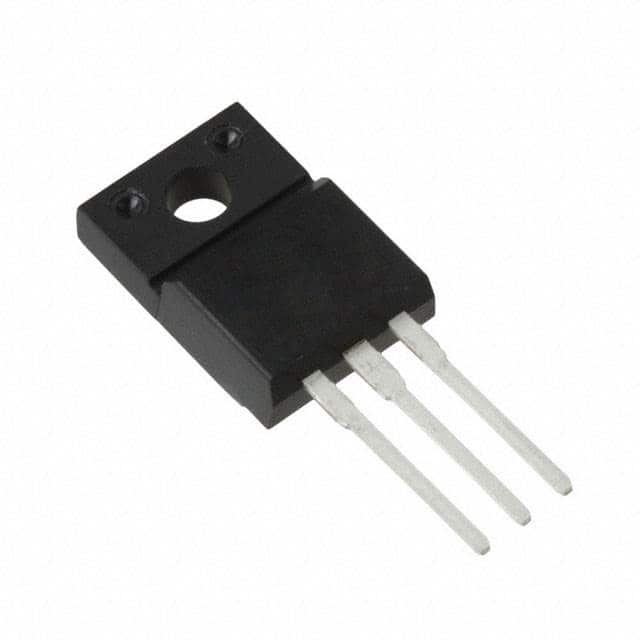Zie specificaties voor productdetails.

2SA1931, KEHINQ(M) - Product Overview
Category and Use
The 2SA1931, KEHINQ(M) belongs to the category of PNP transistors and is commonly used in electronic circuits for amplification and switching purposes. Its characteristics make it suitable for a wide range of applications in various electronic devices.
Basic Information Overview
- Category: PNP Transistor
- Use: Amplification and Switching
- Characteristics: High voltage capability, low saturation voltage, high current capability
- Package: TO-220F
- Essence: Reliable and efficient transistor for electronic circuits
- Packaging/Quantity: Typically available in reels or tubes containing multiple units
Specifications
- Collector-Base Voltage (VCBO): 160V
- Collector-Emitter Voltage (VCEO): 160V
- Emitter-Base Voltage (VEBO): 5V
- Collector Current (IC): 1.5A
- Power Dissipation (PD): 1.25W
- Transition Frequency (fT): 100MHz
- Operating Temperature Range: -55°C to 150°C
Detailed Pin Configuration
The 2SA1931, KEHINQ(M) typically has three pins: 1. Collector (C): Connected to the positive supply voltage in most circuit configurations. 2. Base (B): Controls the transistor's conductivity when a small current is applied. 3. Emitter (E): Allows the flow of current from the collector to the emitter when the base receives a small current.
Functional Features
- High voltage capability allows for use in various power applications.
- Low saturation voltage minimizes power loss during switching operations.
- High current capability enables handling of substantial electrical loads.
Advantages and Disadvantages
Advantages: - Suitable for high-power applications due to its high voltage and current capabilities. - Low saturation voltage leads to improved efficiency in switching circuits.
Disadvantages: - May require careful thermal management due to the power dissipation limitations. - The TO-220F package may be relatively large for some compact designs.
Working Principles
The 2SA1931, KEHINQ(M) operates based on the principles of PNP transistor behavior, where the flow of current between the collector and emitter is controlled by the current applied to the base terminal. This allows for amplification and switching functions within electronic circuits.
Detailed Application Field Plans
This transistor is commonly used in audio amplifiers, power supply circuits, motor control systems, and other applications requiring high-voltage and high-current capabilities. Its reliability and efficiency make it suitable for both consumer and industrial electronic devices.
Detailed and Complete Alternative Models
- 2SA1837
- 2SA1015
- 2SA1943
- 2SA970
This comprehensive entry provides an in-depth understanding of the 2SA1931, KEHINQ(M) transistor, covering its basic information, specifications, functional features, advantages and disadvantages, working principles, application field plans, and alternative models.
Noem 10 veelgestelde vragen en antwoorden met betrekking tot de toepassing van 2SA1931,KEHINQ(M in technische oplossingen
What is the application of 2SA1931 and KEHINQ(M in technical solutions?
- 2SA1931 and KEHINQ(M are commonly used as power transistors in various electronic circuits such as amplifiers, power supplies, and motor control applications.
What are the key specifications of 2SA1931 and KEHINQ(M?
- The key specifications include voltage and current ratings, power dissipation, gain, and frequency response.
How do I connect 2SA1931 and KEHINQ(M in a typical amplifier circuit?
- In an amplifier circuit, 2SA1931 and KEHINQ(M are typically connected in a common emitter configuration with appropriate biasing and coupling components.
Can 2SA1931 and KEHINQ(M be used in high-power applications?
- Yes, both transistors are capable of handling high power levels and are suitable for high-power applications.
What are the thermal considerations when using 2SA1931 and KEHINQ(M?
- Proper heat sinking and thermal management are important when using these transistors in high-power applications to ensure reliable operation and prevent overheating.
Are there any specific precautions to consider when using 2SA1931 and KEHINQ(M?
- It's important to avoid exceeding the maximum ratings specified in the datasheets and to handle the transistors carefully to prevent damage from static electricity.
What are the typical operating conditions for 2SA1931 and KEHINQ(M?
- The typical operating conditions include a specified range of collector current, collector-emitter voltage, and temperature.
Can 2SA1931 and KEHINQ(M be used in audio amplifier designs?
- Yes, these transistors are commonly used in audio amplifier designs due to their high power handling capabilities and low distortion characteristics.
Do 2SA1931 and KEHINQ(M require any specific driver circuitry?
- Depending on the application, driver circuitry may be required to properly bias and drive these transistors for optimal performance.
Where can I find detailed application notes for using 2SA1931 and KEHINQ(M in technical solutions?
- Detailed application notes and reference designs can often be found in the manufacturer's datasheets or application guides, providing valuable information for designing with these transistors.

